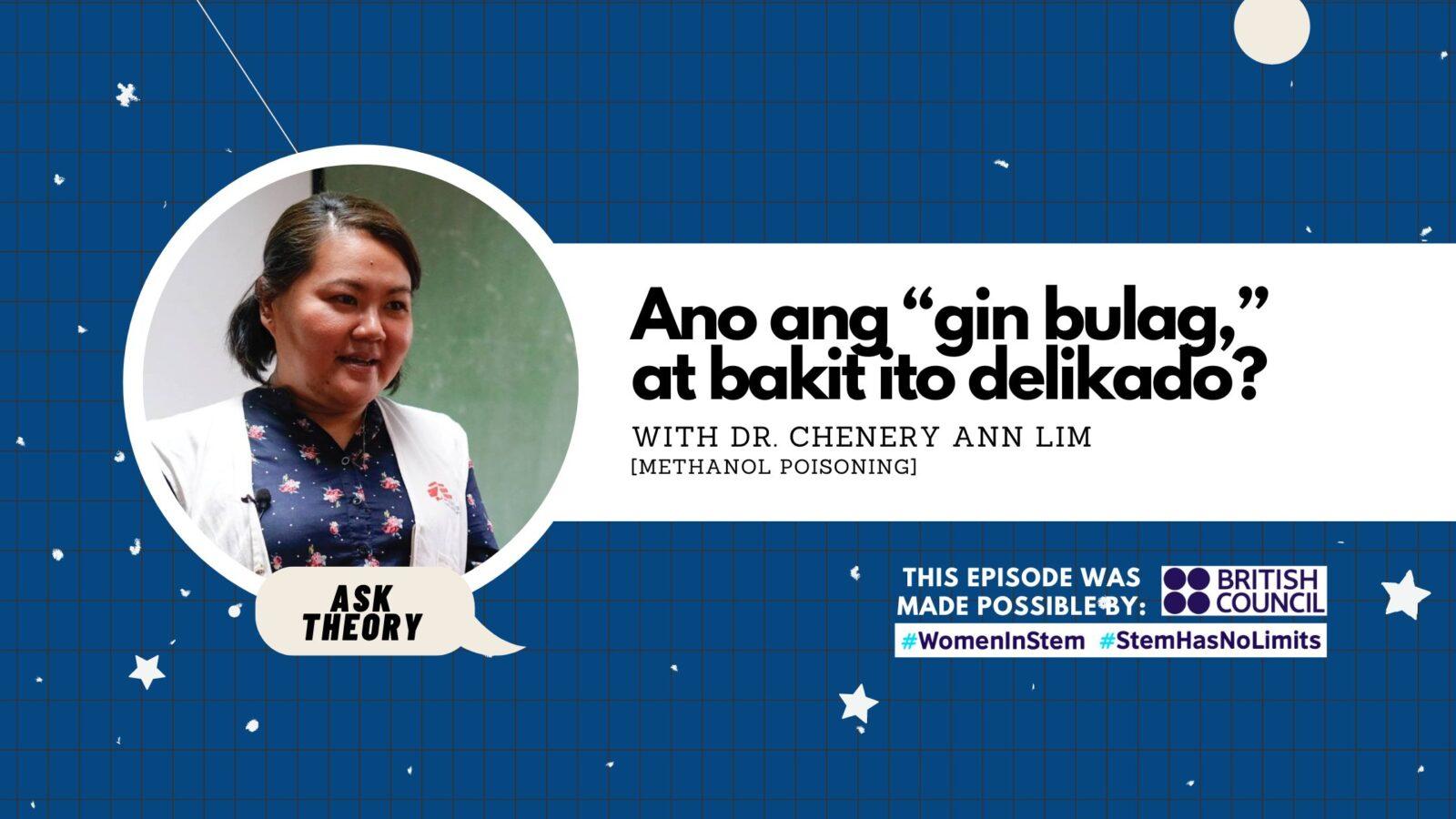
Hosted by EIC Mikael Angelo Francisco, Ask Theory shines the spotlight on Pinoy scientific brilliance, in a fun and entertaining “kwentuhan” format. Each episode of Ask Theory features a Pinoy scientist from one of the various scientific disciplines. In a very casual conversation, guests explain what they do in simple terms, as well as share their fascinating stories: how they got into science, the challenges they face, what motivates them to pursue their fields, what future scientists from the Philippines can look forward to, and so much more.
Episode 135: Workaholism: Success Indicator Or Silent Killer?
Listen to Ask Theory Episode 135 here:
TRANSCRIPT:
Trigger warning: This audio essay contains mentions of suicide and mental health issues.
Do you consider yourself a “workaholic?”
When James Howell immortalized the adage “All work and no play makes Jack a dull boy” in 1659’s Proverbs, it’s a safe bet that he wasn’t even considering the possibility of Jack being a total work junkie.
After all, “workaholism” only formally became the name for the drive to work non-stop a little over three centuries later. Psychologist Wayne Oates defined it as “the compulsion or the uncontrollable need to work incessantly,” calling it an addiction that was “more socially acceptable” than alcoholism in his 1968 essay “On Being a Workaholic (A Serious Jest).”
Workaholism (or ergomania, if you prefer the scientific term) is perhaps the only addiction that anyone would willingly admit to — proudly, even. Declarations of work addiction are typically delivered by self-professed workaholics in the same manner as how one would talk about scaling Mount Everest or joining Mensa. You probably have a friend, relative, or officemate who wears workaholism like a badge of honor. In fact, it’s possible that you’re thinking that the term applies to yourself as well.
You might want to take a moment to rethink that, though. There is a difference between working hard and being addicted to work — and confusing the latter for the former can have lethal results.
A working definition of workaholism
In a 2016 article, Dr. Malissa A. Clark from the University of Georgia’s Department of Psychology offered three key indicators of workaholism, based on common aspects found across various definitions and studies: (1) a compulsion to work due to internal pressures, (2) constantly thinking about work when not working, and (3) working beyond reasonable expectations, despite the potential for negative consequences.
As far as these negative consequences go, various studies have shown an association between workaholism and sleep deprivation, impaired brain functions, high blood pressure, weight gain, and even marital problems. Researchers at the University of Bergen in Norway discovered that more workaholics exhibited characteristics consistent with ADHD, OCD, anxiety, and depression than non-workaholics.
“Thus, taking work to the extreme may be a sign of deeper psychological or emotional issues. Whether this reflects overlapping genetic vulnerabilities, disorders leading to workaholism or, conversely, workaholism causing such disorders, remain uncertain,” according to researcher and Clinical Psychologist Specialist Cecilie Schou Andreassen.
Schou Andreassen’s team developed the Bergen Work Addiction Scale, which uses seven valid criteria to identify workaholism among test subjects. Individuals who score at least a 4 on more than half of the criteria are flagged as workaholics.
Hooked on a feeling
To better understand workaholism, it would be helpful to examine how addiction happens in the first place. Certain substances (such as alcohol and drugs) and activities (such as gambling or sex) trigger the release of the neurotransmitter dopamine from our neurons.
Dopamine is associated with pleasure and reward; as more dopamine gets released in the nucleus accumbens — the brain’s “pleasure center” — we come closer and closer to addiction. And as our tolerance to dopamine increases, so does our desire to engage in the same behavior at a progressively higher intensity. For workaholics, this means that, just like them, their neurons are actually working overtime.
Scientists at the National Institute of Mental Health in Washington, D.C. turned monkeys into workaholics by preventing their cells from receiving dopamine. Since they had no idea how much work it would take before they received their rewards, the simian slackers quickly became proactive primates, working feverishly on the task given to them with fewer errors.
An Asian addiction?
While workaholism isn’t necessarily tied to longer work hours, it’s still one aspect worth looking into, particularly within the context of a person’s physical, mental, and emotional well-being.
According to 2021 statistics from the International Labour Organization, seven of the ten countries whose employed populations worked the most number of average hours per week were from Asia. Among these Asian countries, India is at the top of the pile, with workers rendering almost 48 hours a week of work — a little over nine and a half hours per workday. A letter published in the Indian Journal of Community Medicine cites a survey of 2,428 individuals in East Bangalore, noting that 15.6% of professionals aged 30-44 and 11.1% of workers in the 45- to 59-year-old range exhibited workaholism based on the Bergen Work Addiction Scale.
Long working days (and the long drinking sessions that follow them) have been the norm in Japan since the country’s rise to economic prominence after the end of World War II. It has reached the point where they coined a word for death resulting from too much work: karoshi, which literally translates to “overwork death.” Even the government recognizes this, as the Japanese Ministry of Labor has been publishing annual karoshi statistics since 1987. There are two kinds of karoshi: death by cardiovascular illness linked to overwork, or suicide due to work-related mental stress.
“An abusive boss can exacerbate the problem, but suicide from overwork usually happens when the victim is suffering from extreme sleep deprivation,” explains Tsukuba University’s Ichiyo Matsuzaki, an expert on workplace stress, in an interview with the Japan Times. “Cerebral fatigue occurs, causing the capacity for decision-making to diminish, and a small incident can lead them to believe that they have no other choice but to die.”
Workaholism isn’t exclusive to employees, either. In South Korea — where “death by overwork” is known as gwarosa — workaholic tendencies have been observed in students, who reportedly forego sleep hours in favor of late-night studying in the hopes of securing their future careers. Tragically, experts say that this proclivity towards overworking has also contributed to the country’s high suicide rates – the highest, in fact, in the tally of the Organisation for Economic Co-operation and Development.
Even scientists aren’t immune to workaholism. A study conducted by researchers from China’s Dalian University of Technology revealed that scientists in China tend to work as much on weekends as they do during weekdays. The Chinese also have their own term for death by overwork: guolaosi.
In the Philippines, legislators filed a resolution to investigate the alarming increase in the number of overworked Filipinos in the last two decades. Based on a report from the Philippine Statistics Authority, 8.105 million Filipinos were overworked in their primary jobs in 2015.
Given all of this, one has to ask: why is a problem as pervasive as workaholism embraced by so many as a positive thing?
Engagement versus enslavement
Here’s the problem: Our colloquial definition of workaholism tends to be more descriptive in nature (basically, what workaholism looks like), instead of exploring why work becomes addictive in the first place. Paired with the generally positive reputation of go-getters in today’s work-driven society, the layperson’s idea of workaholism becomes less of an uncontrollable affliction and more of a means of social validation.
When most of us think of workaholism, what we’re actually picturing in our minds is work engagement. While they may seem similar to one another, there are significant differences between the two.
For starters, engaged workers work because they enjoy it; meanwhile, workaholics work because they feel that they should be working.
Research has also revealed that work engagement is tied to attentiveness, self-assurance and other positive emotions, while workaholism tends to be linked to guilt, anger, irritation, and disappointment. Findings also show that workaholics are more likely to experience stress and complain about health problems than engaged workers.
Interestingly, based on Dr Clark’s findings, workaholism doesn’t even have a significant relationship with actual work performance. In other words, spending a lot of time thinking about work doesn’t necessarily mean you get more work done.
The detrimental effects of workaholism on human health, relationships, and overall well-being simply cannot be ignored. Embracing the term “workaholic” and attaching a positive meaning trivializes the struggle of people who really are in danger of working themselves to death.
Thus, before science can determine the best ways to deal with workaholism, we must first come to a universal agreement on what it is — and perhaps more importantly, what it isn’t.
(Adapted from an essay written by Mikael Angelo Francisco)
The Ask Theory Podcast is available via these platforms — make sure to subscribe, as we’ll be releasing a new episode every week:
Spotify: https://open.spotify.com/show/1GDcxBwETsD4KM1EmTr1aI
Apple Podcasts: https://podcasts.apple.com/ph/podcast/ask-theory/id1550251048
Anchor: https://anchor.fm/ask-theory
Breaker: https://www.breaker.audio/ask-theory
Google Podcasts: https://www.google.com/podcasts?feed=aHR0cHM6Ly9hbmNob3IuZm0vcy80OTAyMWNjMC9wb2RjYXN0L3Jzcw==
Pocket Casts: https://pca.st/gv6jxkki
RadioPublic: https://radiopublic.com/ask-theory-WJkbLJ
Music: Hopeful Cinematic Ambient by bdProductions; My Mysterious Planet by Free Music









